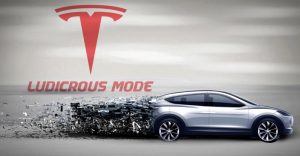by Eric Peters, Eric Peters Autos:

Want to know for sure – and be able to prove – there’s no “climate crisis”? Just point to the EV – the supposed cure for it.
Specifically, point out the problem. Not the range. Nor the time it takes to recharge one of these battery powered devices. Those are limitations – and hassles – bought into by the people who own an EV.
The thing that gives the lie – to the idea that we must all drive an EV because of the supposedly looming “crisis” – is the fact that EVs are excessive.
TRUTH LIVES on at https://sgtreport.tv/
If there is a crisis pending – an emergency! – then everything must be done to address it as aggressively as possible. If a ship is threatened with sinking, you do everything possible right now to prevent it from taking on more water. You don’t have the deckhands polish the brass.
Yet isn’t that essentially what the EVs being pushed onto the market are all about?
Every single one of them is overweight and over-powered. They all brag on how quickly they accelerate and that quickness is consumptive, is it not? Whether you are burning gas or electricity, it burns faster when you use it to get several thousand pounds of vehicle moving quickly. Such capability is certainly appealing. It is fun to get to 60 in 2.9 seconds. But if we are facing a crisis, how can designing a vehicle around an attribute as non-essential and frivolous as being able to launch itself quickly be anything other than a clue you are being lied to about the supposed “crisis”?
In order to deliver this totally unnecessary ability to accelerate quickly, an EV ends up being much heavier than it need otherwise be. Not so much because it needs a massively heavy battery pack to accelerate quickly but because accelerating quickly uses up power.
The massively heavy battery pack is necessary to be able to make use of the quickness capability and still be able to use the car for something else.
An EV could go very quickly – briefly – without the 800-1,000 pound battery pack a typical EV has to lug around. It just wouldn’t go very far, if the owner used the quickness capability – for the same reason a quick gas-engined car would not go very far if it had a very small gas tank.
As a for-instance: The 2023 Mercedes EQE I recently test drove could still get to 60 in 4 seconds with a battery pack half the size (and weight) of the one it comes with. But, if you made use of the capability to get to 60 in 4 seconds, the charge (and so, your range remaining) would deplete rapidly. If you only had half as much energy stored to begin with, you’d have very little range left, after having burned through the energy you had.
So, the EV that is designed to go quickly is designed to house the necessarily huge and hugely heavy battery pack necessary to store enough electricity to enable it to go farther as well as quickly. Just the same as a powerful car needs a large tank to store enough gas to make up for how quickly it burns through it.
Otherwise, it wouldn’t go far enough for even EV people to put up with it.
Of course, if it didn’t need to be quick, it could go farther with less battery – and use fewer resources and less energy.
Read More @ EricPetersAutos.com




